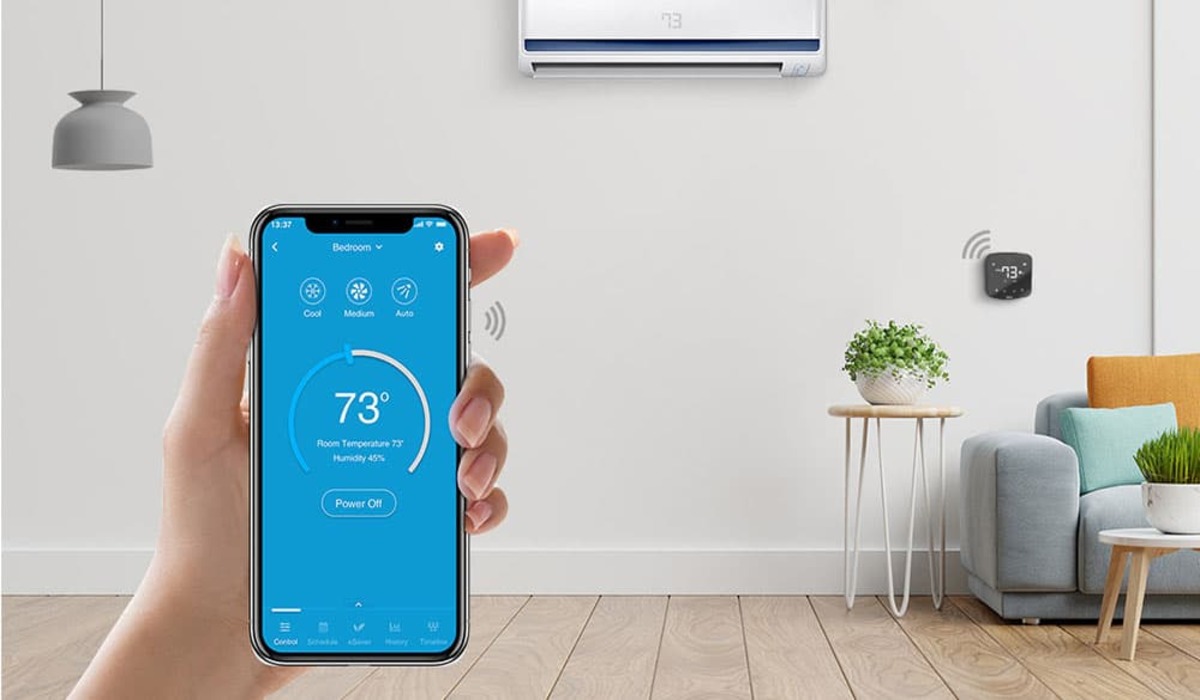Let’s face it, when you are thinking about home design, you probably focus on flooring, wall colors, lighting, and furniture. HVAC vents aren’t usually the first thing that comes to mind when you’re dreaming up your perfect home design.
Vents are often seen as something that sticks out and clashes with your beautiful interiors. What if we said it doesn’t have to be like that? With the right strategies, you can blend HVAC vents into your home’s design that makes comfort and style work together.
At The Chill Brothers, we help Texas homeowners modernize their spaces while keeping their heating and cooling systems fully functional and efficient. In this blog, we’ll share some simple and effective ways to integrate your HVAC vents seamlessly into your home design and turn them from eyesores into harmonious features.
What is a Vent?
HVAC vents are a part of your home’s heating, ventilation, and air conditioning system. It is mainly an opening that delivers and returns air to maintain air flow in your space.
There are mainly two types of HVAC vents:
- Supply Vents: They push heated or cooled air into your rooms. These vents are connected to ductwork from the furnace or AC, and are often found on floors, walls, or ceilings. Supply vents are controlled by dampers or louvers to adjust the airflow.
- Return Vents: It draw air from the rooms and send it back into the HVAC system. Usually, they are larger than supply vents. They are located on walls or ceilings, and are essential for keeping air pressure balanced.
How Vent Cycle Works
- Your thermostat senses your home’s temperature and calls your HVAC system for heating or cooling.
- Your HVAC system kicks on and starts pushing treated air out into your rooms through the supply vents (either warm or cool).
- Fresh air circulates throughout your space.
- The return vents quietly pull the used air back into the system as air circulates.
- Returned air then gets filtered to remove dust and allergens, then conditioned depending on the situation- heated or cooled again and sent right back to the supply vents to push out and restart the cycle.
Why Vents Matter
Your HVAC vents look like a negligible thing, but they serve great purposes, including:
- Ensuring warm or cool air reaches each room
- Preventing stuffy or stagnant air in certain areas by moving air throughout the home
- Helping HVAC systems run more efficiently with well placement
- Distributing air evenly with proper design
- Pulling in and filtering indoor air
- Reducing noise from the airflow
- Making cleaning filters and maintenance easier
- Controlling airflow room by room with vent zoning
What Are the Simple Ways to Integrate HVAC Vents Seamlessly into Home Design?
Vents are essential but not-so-attractive elements that stick out like a sore thumb. However, you can easily fit them with proper planning and even make them improve your home décor. Here’s how you can integrate them that goes with your home design with our approach:
1. Choose Designer Vent Covers
The standard grilles used in vents are metal. They are functional, but often clash with the interior. There are other options available to fit with your unique designs: woods, brass, and powder-coated finishes. They can easily match modern, rustic, or traditional homes.
At The Chill Brothers, here’s our approach:
- Design with Performance: An overly congested design can restrict airflow by 30–50%. Always look to preserve full airflow without compromising. Make sure your efficiency and style coexist.
- Material Options: We recommend high‑quality powder‑coated metal for durability or wood covers for warm finishes, especially when you coordinate with cabinetry or trim.
- Custom Sizing & Louvers: With custom designs, focus on plenty of “free area”. This means your system works perfectly, and your vents look stunning.
2. Paint Vents to Match Walls or Ceilings
Painting your vent covers to match their surrounding walls or ceiling is a simple yet effective design trick. When you merge vents into your design, they camouflage visually. Here are some additional tips to keep in mind:
- Clean and prime (preparatory coating) plastic or metal vents before painting.
- Use high-adhesion coatings made for HVAC surfaces when you prime.
- Match the color with your walls. It doesn’t have to be the same color, but the colors should blend in with your walls or surroundings.
3. Blend with Architectural Details
Vent designs can also blend with HVAC elements. For example, you can hide vents inside the moldings or built-in shelving without interfering with proper airflow and pressure.
Some other good places are: built-in cabinets and under benches for kitchens and living rooms.
4. Avoid Blocking with Furniture
Sometimes, furniture can block your vents. You don’t want your furniture to be the reason to disrupt airflow and comfort. Here’s how you can prevent that from happening:
- Plan the placements of your furniture strategically
- Use low-profile extenders if a piece of furniture must sit over a vent (It will raise the register above the furniture without disrupting proper air circulation)
5. Use Wall Art or Slatted Panels
You can turn your vents into design features using perforated art slatted screens or framed screens that discreetly conceal them. Our approaches:
- Custom screening: We design art panels or slatted woodwork that allow free airflow behind vents and are easily removable for cleaning.
- Functional décor: You can think of floating frames or latticed wood panels placed over return grilles. Just beautiful, functional, and accessible.
6. Floor‑to‑Ceiling Coordination
Your vent materials and placement should both align with the flooring or architectural levels.
Make sure your vent registers sit level with hardwood, tile, or carpet to maintain a smooth transition across the floor surface. Whether you’re using oak, slate, or plush carpet, the vents should match the hue, texture, and installation height.
7. Consider Ductless Mini‑Split Systems
You can consider ductless systems for renovations or new builds to eliminate bulky vents altogether. We recommend super-efficient mini-splits that don’t rely on air ducts. You can easily mount them on walls, ceiling cassette, and floor mountings to look modern and unobstructive.
No ducts means there’s no possibility of wasted energy through duct leaks, too. You can also enjoy zoning controls, depending on the unit you are choosing. Overall, it’s a good choice for both aesthetic and long-term energy savings.
Final Thoughts
Integrating HVAC vents into your home design doesn’t mean you have to sacrifice style for function. With smart planning like designer vent covers, flush-mount options, or even ductless mini-splits, you can blend not only comfort but also aesthetics beautifully.
At The Chill Brothers, we specialize in combining efficient airflow with seamless design elements tailored to your unique home. Whether you’re remodeling or building a new home, we help turn simple-looking vents from visual distractions into design-enhancing features. Thoughtful integration improves all-air circulation, energy savings, and overall comfort—while elevating your home’s value.
Need professional help to create a space where form and function work together effortlessly? Visit our website today or call 844-512-4455 for a free consultation and transform your home!

